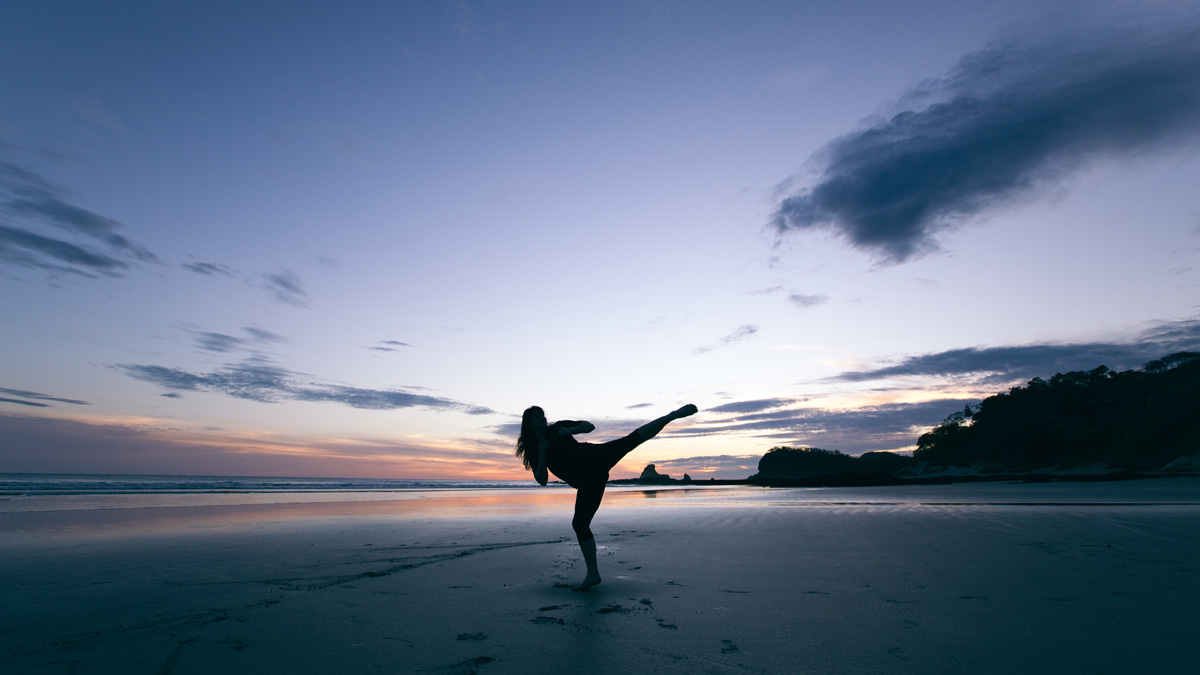Which martial art is right for you?
 Jason Briscoe
Jason BriscoeIf you’re looking to improve your health, fitness, or confidence, martial arts are fantastic. However, for a lot of people, it’s hard to navigate the foreign names and subtle differences. This collection of the most popular martial arts should give you the right background knowledge to help you make the right choice.
First off, all martial arts share some core benefits. All value confidence, self-control, and intense focus. Most martial arts are just as much of a mental game as a physical one, so if you are out of shape or recovering from injury, it is easy to adapt exercises without giving up the mental boost you’ll come out with. All martial arts also strive for a well-rounded athlete, training strength, speed, endurance, and strategy. Dancers, hockey players, and skiers can all benefit from the complimentary training martial arts offer, whether it’s the offseason or not. Finally, martial arts are for everyone. No matter your physical ability, skill level, age, race, or gender, martial arts offer a place for you.
Karate
Origin: Japan, early 1900s
Schools: About 20 in Edmonton
Almost everyone has heard of karate. You’ve probably watched The Karate Kid, or had a friend that “tried karate as a kid.” Since it reached mainstream media, karate has been an umbrella term for all martial arts to people who don’t know the difference. In reality, karate is a relatively new art form known as “the way of the empty hand.” It is a standing art, meaning you will spend most of your time on your feet rather than wrestling. It is great for close combat fighting, and puts a fairly even emphasis on hand and foot techniques. Depending on your school, you may or may not compete in fights or competitions. Either way, you will be specializing in strikes, and then mastering patterns, or katas, that will display your knowledge.
Taekwondo
Origin: South Korea, about 50 BC
Schools: About 20 schools in Edmonton
Taekwondo is truly an ancient art perfected by time, as it has evolved for more than 2,000 years in South Korea. Translated, taekwondo means “the way of the foot and fist.” This is a very balanced sport- you will be tackling board breaking, self-defense, and poomsae (technique patterns similar to “kata” above) fairly equally. Taekwondo is a more defensive sport than others, focused on protecting oneself rather than offensive striking. This doesn’t mean you won’t master the offensive, and if you advance far enough, you will learn to fight using nunchuks. This martial art specializes in kicking more than upper body techniques, although both are learned, and works to improve flexibility due to this focus. Depending on the school you choose, you may or may not begin sparring, which is controlled fighting where the athletes wear protective gear.
Kung Fu
Origin: China, 600 AD
Schools: About 12 in Edmonton
Kung fu is another martial art brought to life by the media in Kung Fu Panda, Mulan, and more. Even though the name is well-known, it is not as commonplace as karate or taekwondo. Kung fu translates to “skill learned by hard work”, and this meaning holds true today. Kung fu practices kicking and punching with the goal of self-defense in mind, but is usually lower impact than other martial arts. It concentrates on speed and precision, making it ideal for smaller people intimidated by flashy throws and fights. There is a natural flow to this art that makes it easy to understand, and with practice it will become second nature to follow your body’s instinctive reactions to danger learned here.
Aikido
Origin: Japan, 1942
Schools: About 20 across Edmonton
Aikido is a contemporary Japanese art specializing in throws and strikes. The focus here is grappling, or ground self-defense, which means you’ll be on the floor almost every class. Groundwork builds phenomenal core strength, but isn’t advisable for those with hip or knee issues. Aikido introduces basic weaponry as well as joint locks and immobilizations. But, it is less competitive than other grappling sports, because the focus is not on beating a partner, but on proving yourself. In a simple translation, aikido means “the way of the harmonious spirit”, and this moral will continue as you advance through belts.
Brazilian Jiu jitsu
Origin: Brazil, 1900s
Schools: About 20 in Edmonton
Brazilian jiu jitsu comes from a fascinating background. A frail Brazilian boy adapted traditional Japanese technique so that body weight was no longer an advantage, and improved the sport so much it became unique. Brazilian jiu jitsu, or BJJ, encompasses chokes, holds, and other grappling techniques. It is another ground sport, but relies less on body weight and more on raw technique to win a match. The fact that this sport was developed in a more modern time makes it especially relevant to everyday self-defense. It is a full-contact sport, but different schools will take this to different levels. Be prepared to work hard and get strong. It is growing fast in popularity, and becoming relatively easy to find if it is of interest to you.
Muay Thai
Origin: Thailand, 1700s
Schools: About 15 across Edmonton
Muay Thai is a Thai sport, where traditionally opponents would exchange one blow equally for another, going back and forth until a winner became obvious. Nowadays, many schools embrace more of a kickboxing technique. Muay Thai is referred to as the “art of 8 limbs”, because it does not only rely on fists and feet, but also embraces knees and elbows as attacks. This whole body technique is raw, and especially useful in everyday self-defense. It is a full-contact sport, but some protective gear is used. You will spend time mastering technique in training, and then executing it in the ring. There is a special focus on conditioning, so be prepared to work hard and sweat.
Regardless of the martial art you choose, be it on the list or otherwise, your physical fitness and mental strength will improve. If martial arts have peaked your interest, consider checking out the university’s available programming. Most of the listed sports can be practiced at the UofA through the Faculty of Physical Education and Recreation programming. If you like your choice, find a school anywhere in the city and tie up your new white belt!




